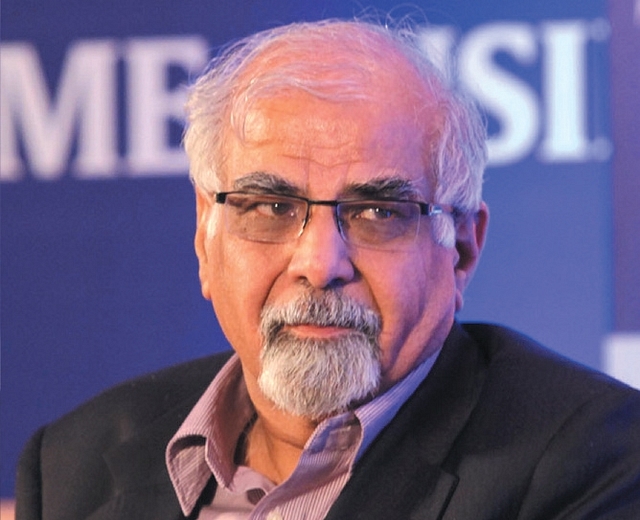
A Radical Shift Is Coming
The old left elites still fight on, believing that that they are the wisdom, the benefactors to whom the hoi polloi have to pay obeisance. But not for long, and certainly not till 2020
Prime minister Narendra Modi was elected on a platform of jobs and growth. Obviously, several other factors are involved but it is safe to assume that if economic growth does not occur, the talk of India in 2020, or whenever, will be just that—talk.
There is considerable amount of low-hanging fruit in the Indian economy, and over the next year or so we will know as to how much of that fruit the government is willing to pluck, and how much to pick up from the ground, before it rots into “policy paralysis”.
[level-subscriber]
Independent of any new policy initiatives that the government might take over the next few years, the following reality is likely to be observed. Inflation in India will overwhelmingly follow trends in world inflation, particularly in that prevailing in developing countries. And in case you think that developing country inflation is considerably higher than the low inflation (around 1 to 2 per cent) observed in developed economies, think again. The gap between the two regions used to be around 3 per cent 30 years ago; it is no more than 2 per cent today. Which means that well before 2020 rolls in, high Indian inflation would not only have rolled out, but will be extinct. Indeed, Indian inflation is likely to average less than 5 per cent within a year, and possibly less than 4 per cent.
The second emerging reality is that policy interest rates will not only fall, but fall beyond most people’s expectations. If inflation is 4 per cent, policy rates (repo) will not likely average above 5.5 per cent. This has profound implications for growth, given that high inflation, and high real interest rates, and “policy paralysis” were the three demons that brought the high-growth Indian economy to its knees.
The second large trend—and only partly associated with declining inflation—is the changing picture of oil prices. The great commodity price cycle rules, and right now it is in a downward trend. These trends last anywhere between five to 10 years, which means that for an oil importer like India, achchhe din are here already: a current account deficit well within the 3 per cent barrier, and likely to be less than 2 per cent. That is a deficit number, though there is an even bet that that number will be close to zero, if not positive.
So how can the Indian government go wrong? On a long-term basis, even if the Modi government falters, the Indian economy is unlikely to slip. Even with the old method of gross domestic product (GDP) calculation, India is set to grow by 7 per cent per annum. But this is well below our potential of around 9 per cent per annum. How do we get that seemingly outlandish number? Very simply, as follows.
The investment rate has averaged around 35 per cent of GDP for the better part of the last decade. In many ways, this can only go up with the economic reforms that have been announced in the Union Budget. A 35 per cent investment ratio means that capital growth will average 8 per cent per annum, which means a GDP growth rate close to 5 per cent. Add 1 per cent growth in employment and a conservative estimate of 2.5 per cent growth in productivity, and India is at 8.5 per cent.
It is per capita growth that matters. The big unheralded story in India is that the total fertility rate in India (the average number of children that an average woman would bear) is now close to the replacement level of two children, ie. zero population growth! With improvements in health and longevity, the population growth is not zero, but it is low, and by 2020, population growth is very likely going to be below 1 per cent per annum!
One note on the likely growth in productivity and growth in the labour force. India is a very different economy than just 10 years ago. One of the BIG trends in India is the convergence in educational achievement of men and women. Today, in urban areas, there is no gap in educational attainment by sex—and in rural areas the gap is only one year. This means that women will bear less children, will be equal bread-earners, and the social structure (bias against women in various forms, social, cultural, political, economic, and sexual) will undergo a tectonic shift. Change that to—already is undergoing a radical shift.
Let us proceed with our theoretical math a bit more. A GDP growth of 8.5 per cent (remember, based on the somewhat inaccurate old GDP data) implies a per capita growth rate of 7.5 per cent per annum. This has never before been achieved in India on any long term basis; this constitutes miracle growth.
Now let us assume that the Modi government begins to transform the economy with much needed reforms—the freeing up of agriculture from the last vestiges of government-mismanaged socialism; the freeing up of labour and land markets from deeply entrenched left tendencies; reduction in tax rates to internationally competitive levels. The list of reforms to be achieved is long. Underlying all these reforms is a much-needed change in mindset—the mindset of left elites who believe that they are the wisdom; that they are the benefactors to which the hoi polloi have to pay obeisance. Those days are gone, but the old elite fights on. But not for long, and certainly not till 2020.
[/level-subscriber]